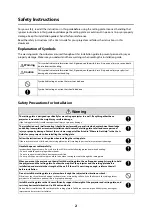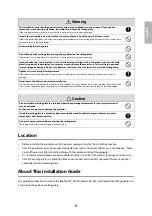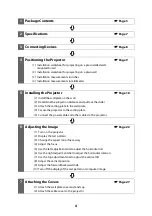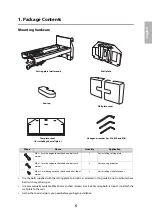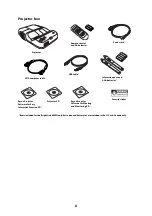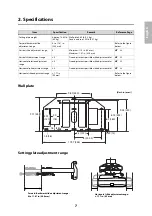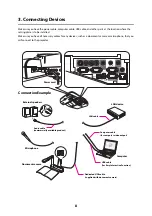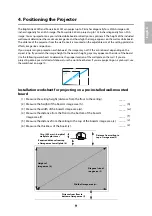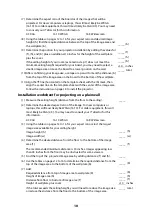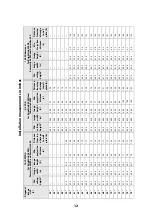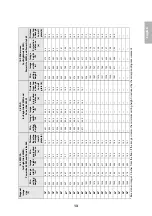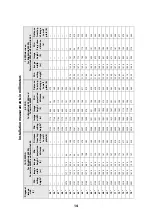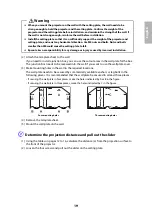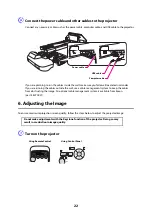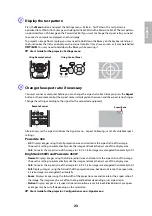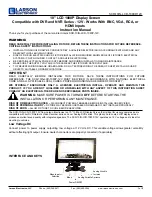
10
(7) Determine the aspect ratio of the board or of the images that will be
projected. For new computers or laptops, this will most likely be WXGA
(16:10). For older equipment, this will most likely be XGA (4:3). You may need
to consult your IT director for this information.
4:3 XGA 16:10 WXGA 16:9 Widescreen
(8) Using the tables on pages 12 to 16 for your aspect ratio and desired image
height (h), find the required distance between the top of the image area and
the wall plate (b).
(9) Determine the position for your projector installation by adding the values for
(f ), (h), and (b), plus an additional 10 inches for the height of the wall plate
plus the cover.
If the ceiling height of your room (as noted in step 1) does not meet the
minimum ceiling height required for your board, you may need to select a
smaller image size or move the board to a lower position on the wall.
(10)After confirming your image size, use tape or a pencil to mark the distance (b)
from the top of the image area on the board to the bottom of the wall plate.
(11)Align the line (horizontal) on the template sheet with the (b) mark, then
align the center line on the template sheet with the center of the image area.
Follow the instructions on page 18 to install the projector.
Installation worksheet for projecting on a plain wall
(1) Measure the ceiling height (distance from the floor to the ceiling).
(2) Determine the desired aspect ratio of the image. For new computers or
laptops, this will most likely be WXGA (16:10). For older equipment, this will
most likely be XGA (4:3). You may need to consult your IT director for this
information.
4:3 XGA 16:10 WXGA 16:9 Widescreen
(3) Using the tables on pages 12 to 16 for your aspect ratio, select the largest
image size available for your ceiling height.
Image height (h)
Image width (w)
(4) Determine the desired distance from the floor to the bottom of the image
area (f ).
The recommended minimum distance is 30 inches. Images appearing less
than 28 inches from the floor may be obstructed for some viewers.
(5) Find the top of the projected image area by adding distances (f ) and (h).
(6) Use the tables on pages 12 to 16 to determine the required distance from the
top of the image area to the bottom of the wall plate (b).
(7) Add:
Required distance from top of image area to wall plate (b)
Height of image area (h)
Distance from floor to bottom of image area (f )
Height of wall plate plus cover
If the total exceeds the ceiling height, you will need to reduce the image size
or reduce the distance from the floor to the bottom of the image area.
_____ (b)
_____ (f )
_____ (h)
_____ (b)
+10 inches
_____ total
_____
_____ (h)
_____ (w)
_____ (f )
_____
_____ (b)
_____ (b)
_____ (h)
_____ (f )
+10 inches
_____ total


